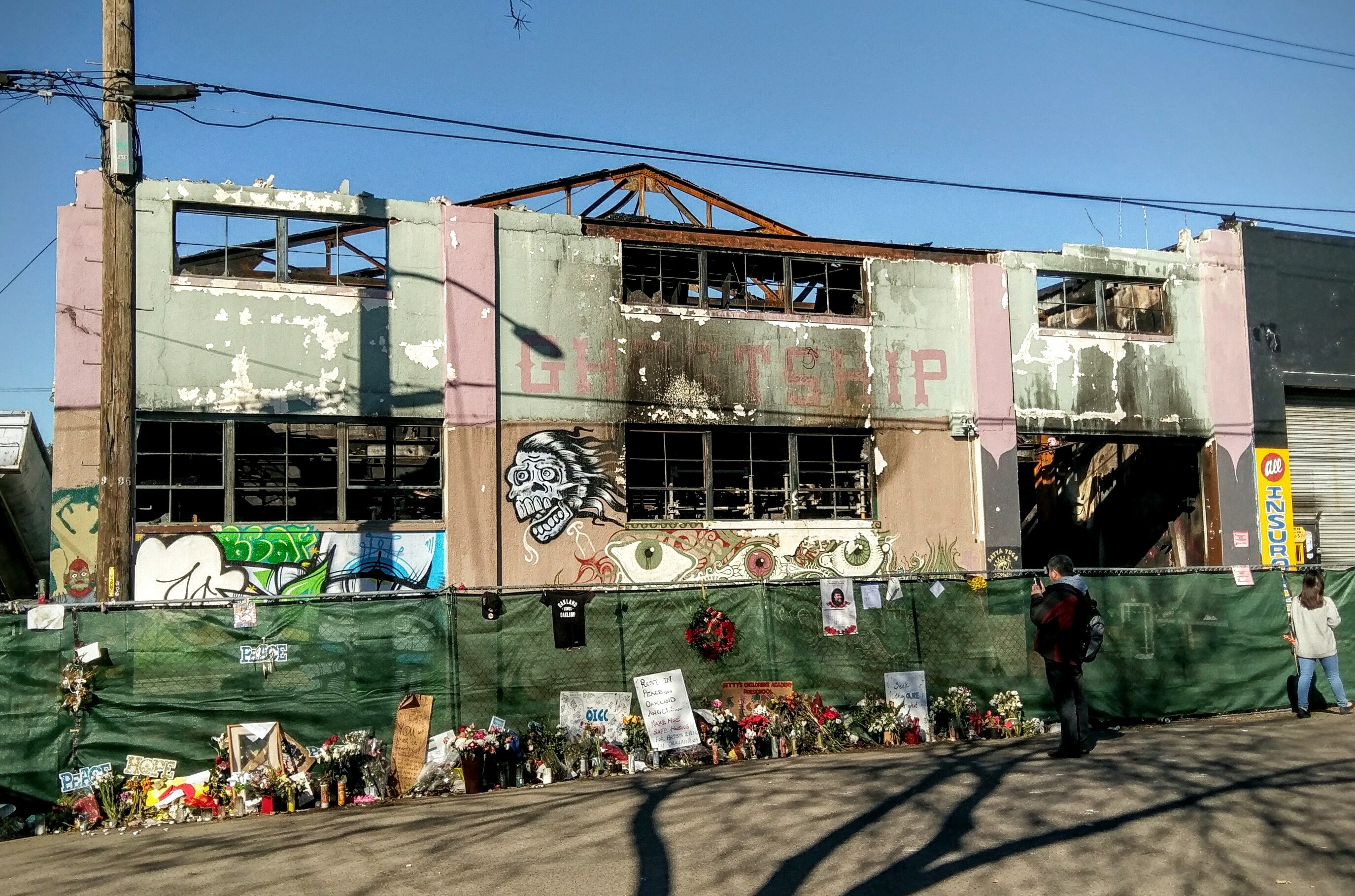
This week’s Article provides a brief update on the goings-on of the civil lawsuits filed as a result of the Ghost Ship Fire on December 2, 2016.
What was the Ghost Ship Fire?
On December 2, 2016, a fire broke out in a “warehouse” located off of Fruitvale Avenue in Oakland, California. At the time of the fire, the “Ghost Ship” was host to a concert promoted by record label 100% Silk. Thirty-six (36) people died in the blaze. It was the deadliest building fire in California’s history since the 1906 San Francisco Earthquake.
Several individuals have come forward with claims for physical, mental and emotional injuries caused by the fire, and/or on behalf of their loved ones who perished in the fire.
A Civil Master Complaint Has Been Filed
On May 16, 2017, a “Master Complaint” was filed with the Alameda County Superior Court. The Master Complaint lists the common set of claims and allegations against several private entity defendants – including but not limited to 100% Silk, PG&E, Derick Ion Almena (the building’s tenant and “manager”), Max Harris ( aka Max Ohr, the artistic director of the “Ghost Ship”), as well as Chor Nar Siu Ng, the owner of the warehouse.
To date, there are thirty-one (31) filed cases, involving forty-seven (47) individual plaintiffs. Each new plaintiff may simply file a short form complaint to adopt the Master complaint.
Claims Against Government Entities
In my inspection of the site and in the ongoing investigation into this deadly incident, I have often asked myself – How could such a dangerous condition exist in this building? How could the city of Oakland not have known or done anything about it?
The answer: They did know. They simply and recklessly disregarded what was their mandatory duty to cure. In fact, not only did various government employees have actual knowledge of the goings-on and the dangers within the Ghost Ship prior to the incident, they wrote reports referring to them.
Government tort claims were filed against the Oakland, Alameda County, and the State of California pursuant Government Code §910, et al. which requires that no later than six months after the event which forms the basis of the claim, any claimant must first give the government notice prior to filing a lawsuit. June 2, 2017 was the last day (also known as the statute of limitations) for any claimant to file this required notice.
The Master Claim against Oakland alleges that the Fire, Police, and Building Departments failed to meet their mandatory duties to protect the public once they became aware that there was a dangerous condition or unlawful use of the facility. There are documents and evidence that show they knew that there were dangerous conditions blocking the sidewalk and obstructing ingress and egress.
The Fire Department has records identifying the structure as “residential.” There have also been unconfirmed reports that Fire Department personnel were invited and attended a special event at the “GhostShip” held in their honor after they extinguished a previous fire. The dangerous conditions within the structure would have been apparent to even a casual observer, much less a trained public safety officer.
Various statutes and ordinances require that once the fire and/or building departments are aware of substandard conditions concerning health and safety, they have an affirmative duty to act to shutter the building or cause it to be brought to compliance.
The claims against the County of Alameda stem primarily from the interaction of Child Protective Services with the building manager, Derick Ion Almena. The County, knowing of the substandard and dangerous conditions where people were maintaining an unlawful residence, and hosting concerts and cabarets, should have advised the Oakland authorities.
Finally, the claims against the State are based on the law that the State Fire Marshal has the original authority, and duty, to enforce the Fire Code.
But haven’t the people responsible already been arrested?
This tragedy invokes not only the civil justice system, but also the criminal justice system. On June 5, 2017, the District Attorney filed criminal charges against Derick Almena and Max Harris. They were arrested and charged with 36 counts of involuntary manslaughter.
The District Attorney, as of this time, has not brought charges against the building owner. It is my belief that there is a basis for charging her given that she knew of the inadequate and unsafe electrical distribution system which she refused to upgrade, and her knowledge that the building was being used for residential and cabaret use without adequate exits and life safety systems.
Based on the District Attorney’s statements, it appears that an effort is being made to deflect liability from the City of Oakland, specifically claiming that the criminal defendants deliberately misled City officials regarding the use of the building. In essence, she claims that the City was prevented from knowing the true use of the building. This does nothing to explain the documents showing the City’s knowledge that the facility was being used as an unlawful entertainment venue: the very use which led to the tragedy.
Soon, the Master Complaint will be amended to include the claims against the government entities. Once this happens, I am certain that the government defendants will file their challenges against the claims – in particular, citing statutory government immunities for failing to inspect or for conducting inadequate inspections.
In the meantime, our investigation continues. There must not only be criminal liability for the deaths that occurred, but also civil liability. Even as another fatal building fire brings to light the inadequacies of the City of Oakland’s response to complaints and poor inspection reports, it is clear that until liability is found, nothing will change.
By attorney Christopher B. Dolan, owner of the Dolan Law Firm. Email Chris questions and topics for future articles to help@dolanlawfirm.com










